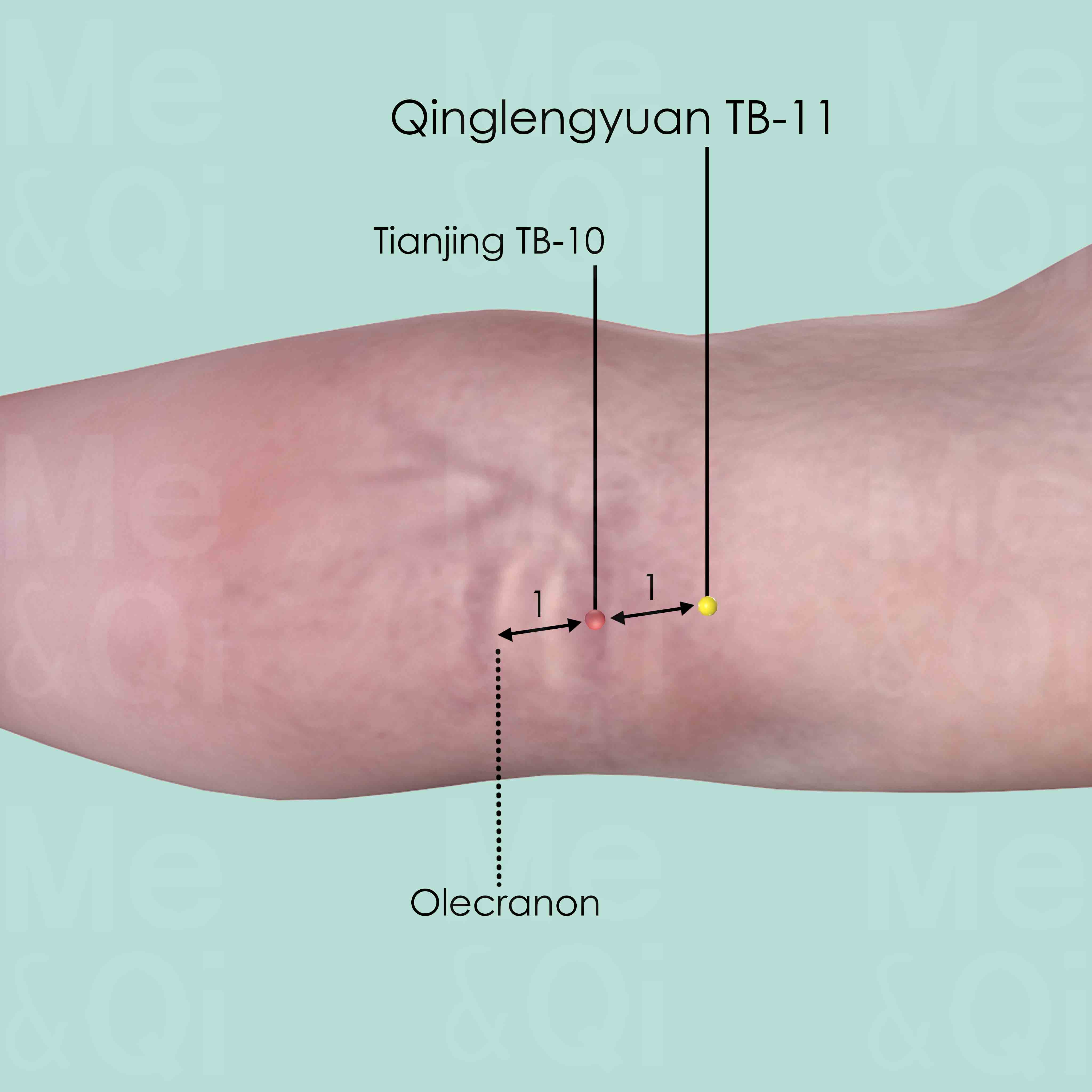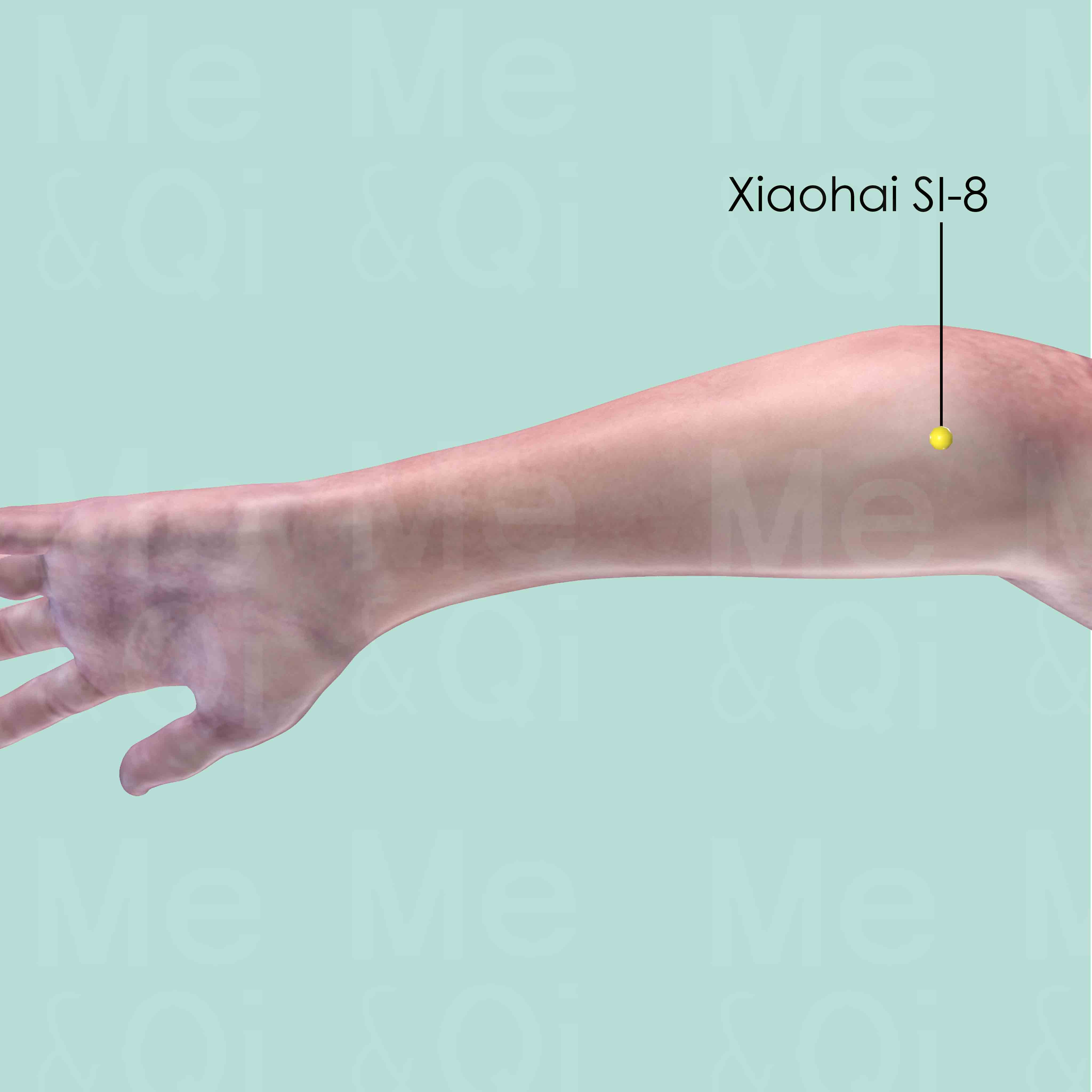Yellow Eyesaccording to TCM
Symptom families: Jaundice, Eye Disorders and Symptoms
Did you mean? Yellow Sclera
What is Yellow Eyes?
Yellow eyes, commonly known as jaundiced eyes, indicate a condition where the sclera, or the white part of the eye, exhibits a yellowish discoloration. This is typically a sign of elevated bilirubin levels in the blood, often linked to liver-related issues such as hepatitis, cirrhosis, or gallstone problems.
It can also indicate issues with the bile duct or pancreas. Yellow eyes are a symptom that requires immediate medical attention to determine and address the underlying cause, as they are often indicative of serious health concerns.
How does TCM view Yellow Eyes?
Traditional Chinese Medicine (TCM) perceives yellow eyes through a lens of systemic balance and harmony, particularly focusing on the Liver and Gallbladder's health. In TCM, the appearance of the eyes is a reflection of these organs' state, with yellow eyes often seen as a sign of imbalance involving Dampness and Heat.
Unlike Western medicine, which often isolates symptoms, TCM considers them as part of a broader pattern of disharmony. Accordingly, the treatment in TCM aims at restoring balance, using methods like herbal medicine, acupuncture, and diet modifications.
Root Causes of Yellow Eyes in TCM
In the context of TCM, the occurrence of yellow eyes is often linked to Dampness in the Gallbladder. This pattern can manifest symptoms such as dull-yellow complexion, discomfort or fullness in the hypochondriac area, nausea, and challenges in fat digestion.
Another related pattern is Damp-Heat in the Gallbladder, which may present additional symptoms like fever, dry mouth, dark urine, and a yellowish complexion. TCM treatments for these conditions focus on correcting the underlying imbalances in Qi, Blood, and organ systems, typically involving a holistic approach tailored to each individual's unique pattern of disharmony.
Explore below more details about what might cause Yellow eyes according to TCM.
- By Syndrome
- By Organ
- Dampness
- Gallbladder
Dampness
"Dampness" in TCM is a concept that describes a pattern of disharmony where the body accumulates excess moisture. Imagine the heavy, sticky feeling you get on a very humid day; that's similar to what dampness feels like internally. It can manifest as a sense of heaviness, bloating, sluggishness, or even a foggy mind. This condition is often thought to arise from environmental factors like living in a damp place, dietary habits that promote moisture in the body, or internal imbalances that hinder the body's ability to process fluids properly. In TCM, dampness can obstruct the normal flow of energy and fluids in the body, leading to various symptoms.... see more
Dampness Patterns That Can Lead to Yellow Eyes
| Pattern Name | Relevant Symptoms | Relevant Formulas |
|---|---|---|
| Dampness in the Gallbladder | Dull-yellow eyes, Jaundice, Dull yellow complexion, Yellow eyes, Hypochondriac pain, Hypochondrial fullness with warmth relief, Nausea or vomiting, Fat malabsorption, Yellow sclera, Cloudy urine, Absence of thirst, Sticky taste in the mouth, Dull headache, Feeling of heaviness... see more | San Ren Tang |
Gallbladder
In TCM the Gallbladder has a unique role in storing and excreting bile, but more importantly, it's seen as crucial for decision-making and courage. It's closely connected to the Liver, assisting in the smooth flow of Qi (vital energy) and supporting the Liver's role in maintaining emotional balance. When the Gallbladder malfunctions or is imbalanced in TCM, it can lead to physical symptoms like gallstones, jaundice, or a bitter taste in the mouth. There might also be digestive disturbances, particularly related to fat metabolism. On an emotional level, a Gallbladder disorder can manifest as indecisiveness, timidity, or a tendency to easily succumb to stress. These symptoms highlight the TCM view of the Gallbladder as integral to both physical processes and emotional resilience.... see more
Gallbladder Patterns That Can Lead to Yellow Eyes
| Pattern Name | Relevant Symptoms | Relevant Formulas |
|---|---|---|
| Dampness in the Gallbladder | Dull-yellow eyes, Jaundice, Dull yellow complexion, Yellow eyes, Hypochondriac pain, Hypochondrial fullness with warmth relief, Nausea or vomiting, Fat malabsorption, Yellow sclera, Cloudy urine, Absence of thirst, Sticky taste in the mouth, Dull headache, Feeling of heaviness... see more | San Ren Tang |
TCM Herbal Formulas for Yellow Eyes
For addressing yellow eyes, TCM relies on specific herbal formulas designed to target the root causes. When treating Dampness in the Gallbladder, practitioners may prescribe formulas such as San Ren Tang, which features Apricot Seeds (Xing Ren) and falls under the category of Formulas that clear Heat and expel Dampness.
This formula is particularly effective in resolving Dampness and ensuring the smooth functioning of the Gallbladder. It's important to note that in TCM, the selection of herbs and formulas is highly individualized, based on each patient's unique diagnosis by a TCM practitioner.
See more details below about San Ren Tang, a herbal formula used to address yellow eyes.
- By Cause
- By Formula Type
- Dampness
- Formulas that clear heat and expel dampness
Top Formula for Dampness:
San Ren Tang
Suitable for Dampness patterns that may cause yellow eyes, such as Dampness in the Gallbladder
Learn moreFormulas that clear Heat and expel dampness
These formulas are suitable for some yellow eyes-causing patterns like Dampness in the Gallbladder.
One such formula is San Ren Tang, with apricot seed as a key herb.
Acupoints for Yellow Eyes
Alongside herbal medicine, acupuncture is a key treatment modality in TCM for yellow eyes. Specific acupoints are targeted to regulate the Gall Bladder and alleviate Damp-Heat. Points like Yanggang BL-48 and Yishe BL-49 on the Bladder Channel are instrumental in this regard, focusing on regulating the Gall Bladder and clearing Damp-Heat.
Other acupoints such as Qinglengyuan TB-11 on the Triple Burner Channel, Qingling HE-2 on the Heart Channel, and Xiaohai SI-8 on the Small Intestine Channel are also utilized, each contributing uniquely to the overall treatment by opening channels, removing obstructions, and improving Qi flow. These acupoints are selected based on individual conditions, forming an integral part of TCM's comprehensive approach to treating yellow eyes.
Explore below some acupoints used to address yellow eyes, organized by meridian.
- By Meridian
- Bladder Channel
- Triple Burner Channel
- Heart Channel
- Small Intestine Channel
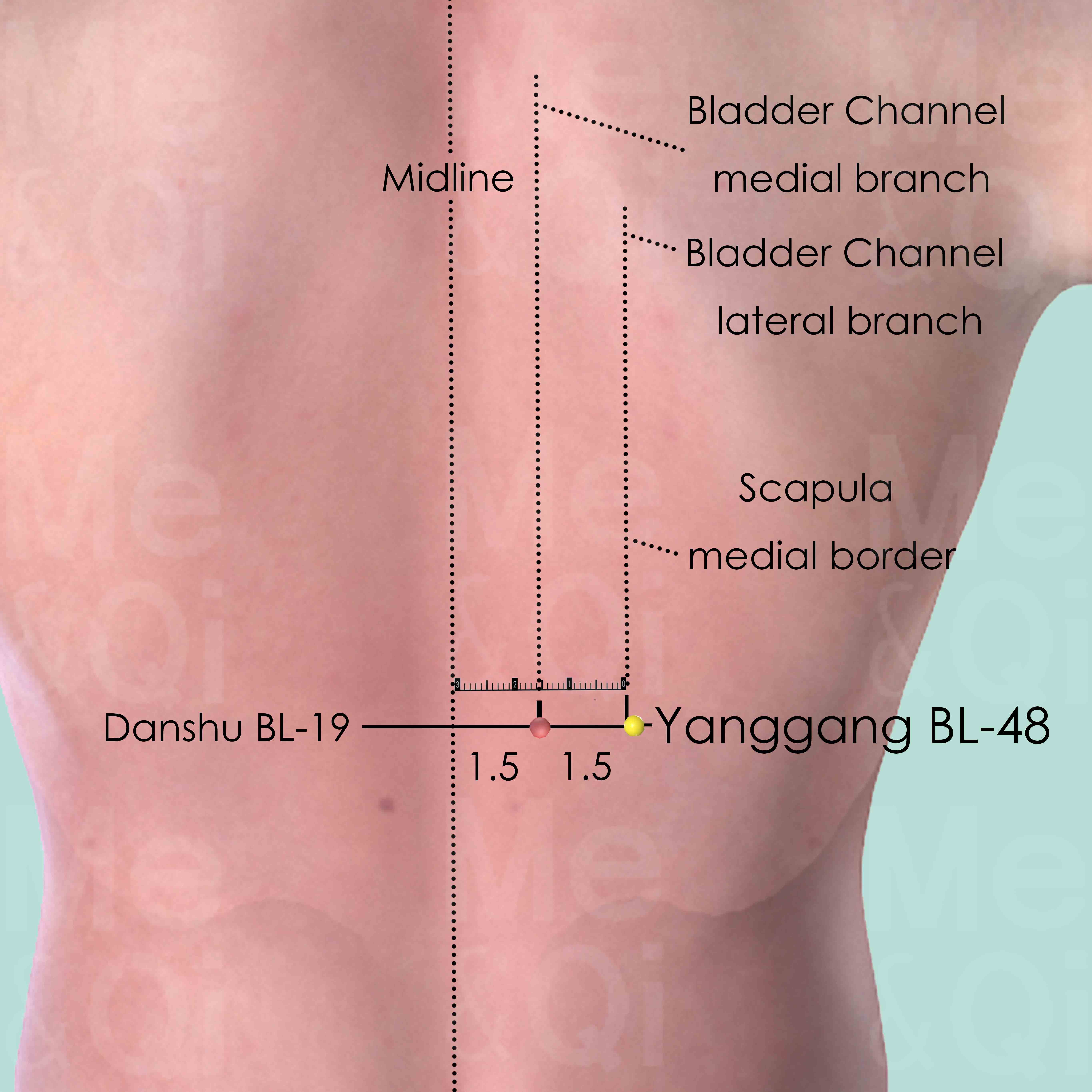
Yanggang BL-48
3 cun lateral to the lower border of the spinous process of the 10th thoracic vertebra (T10).
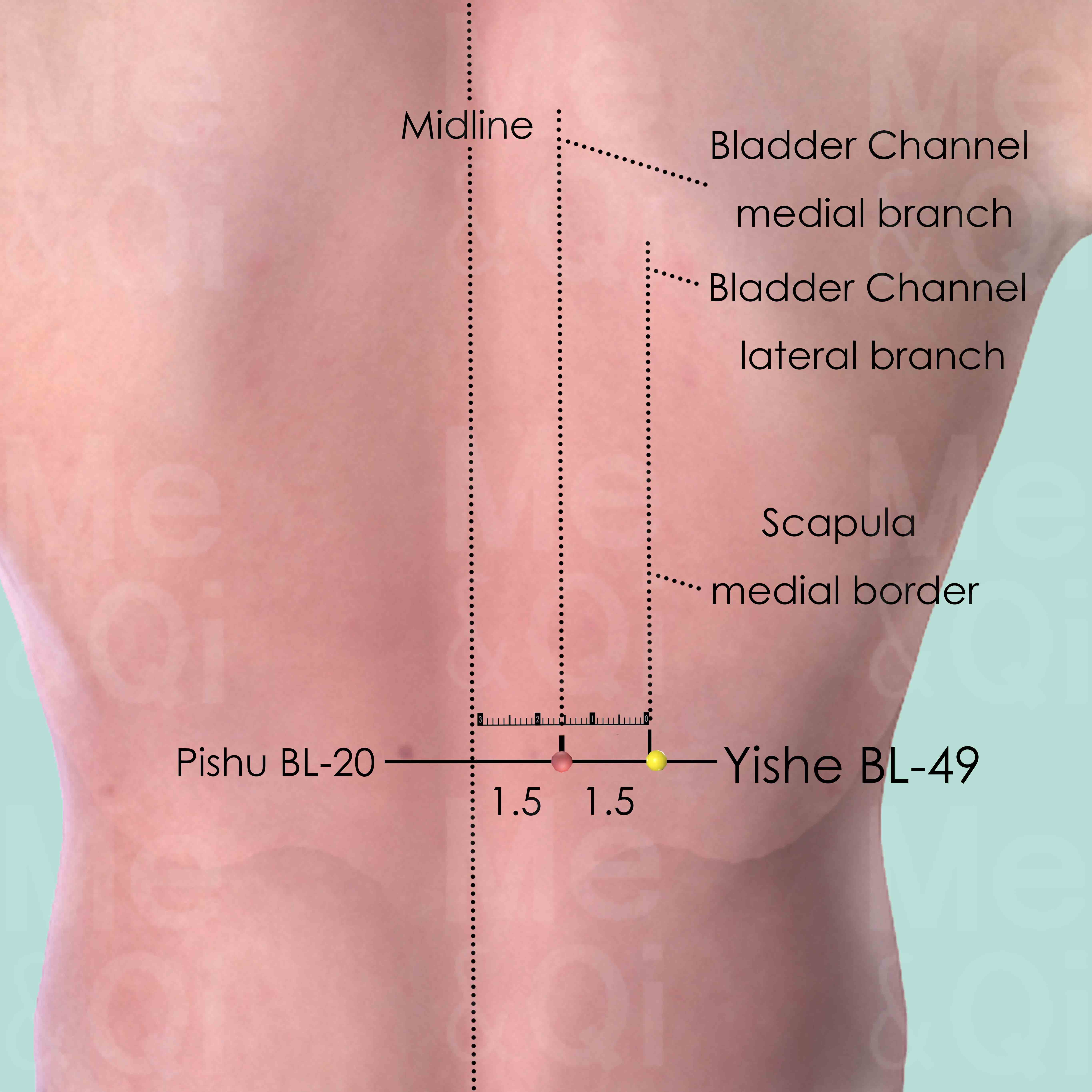
Yishe BL-49
3 cun lateral to the lower border of the spinous process of the 11th thoracic vertebra (T11).
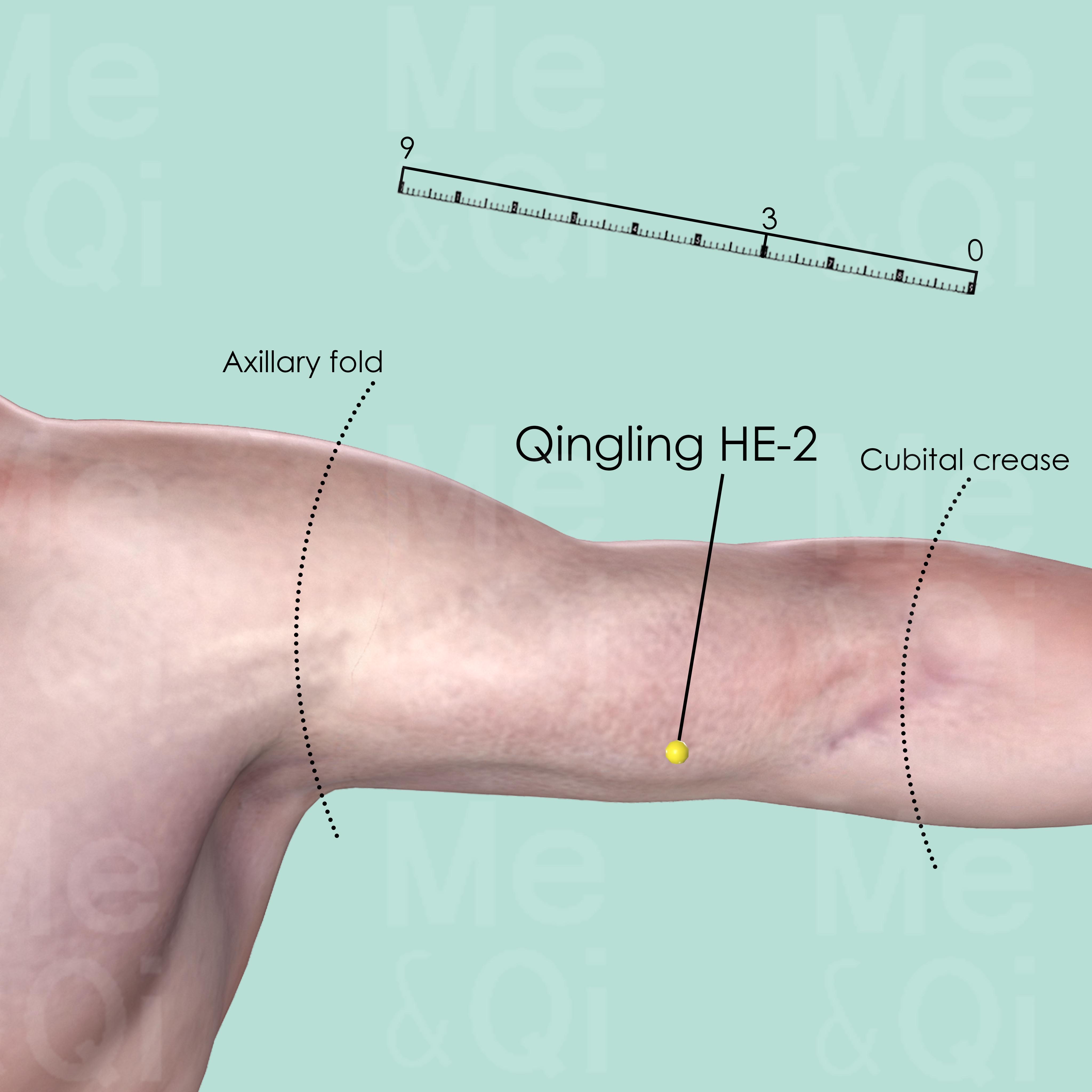
Qingling HE-2
3 cun above the medial end of the transverse cubital crease, in the depression medial to the biceps brachii muscle.

